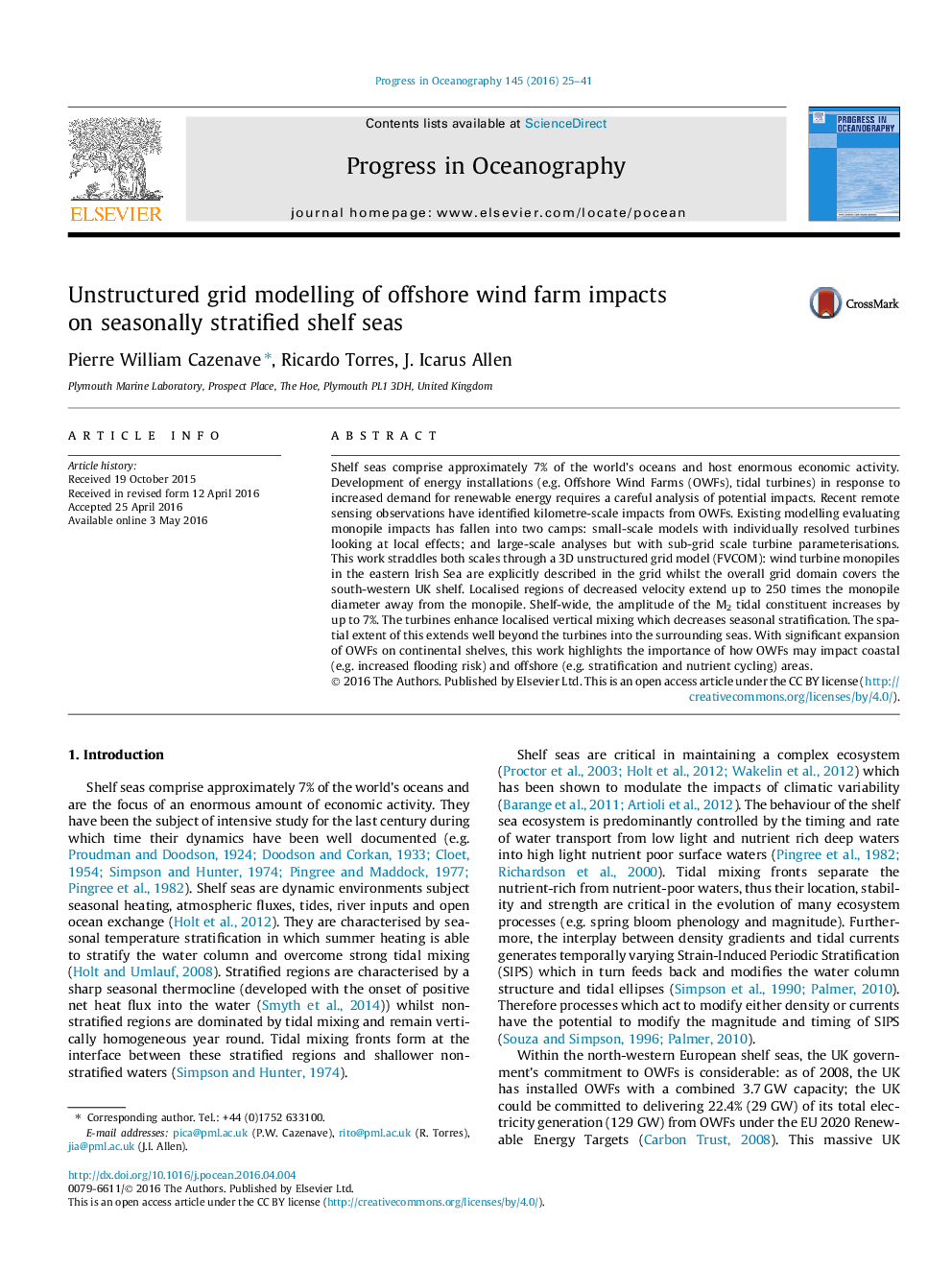| Article ID | Journal | Published Year | Pages | File Type |
|---|---|---|---|---|
| 6388345 | Progress in Oceanography | 2016 | 17 Pages |
â¢Unstructured grid means monopile to shelf scales can be modelled at once.â¢Wind turbines induce changes in stratification due to more mixing at monopiles.â¢Turbines also alter shelf-wide tidal amplitude with increases at sensitive coasts.
Shelf seas comprise approximately 7% of the world's oceans and host enormous economic activity. Development of energy installations (e.g. Offshore Wind Farms (OWFs), tidal turbines) in response to increased demand for renewable energy requires a careful analysis of potential impacts. Recent remote sensing observations have identified kilometre-scale impacts from OWFs. Existing modelling evaluating monopile impacts has fallen into two camps: small-scale models with individually resolved turbines looking at local effects; and large-scale analyses but with sub-grid scale turbine parameterisations. This work straddles both scales through a 3D unstructured grid model (FVCOM): wind turbine monopiles in the eastern Irish Sea are explicitly described in the grid whilst the overall grid domain covers the south-western UK shelf. Localised regions of decreased velocity extend up to 250 times the monopile diameter away from the monopile. Shelf-wide, the amplitude of the M2 tidal constituent increases by up to 7%. The turbines enhance localised vertical mixing which decreases seasonal stratification. The spatial extent of this extends well beyond the turbines into the surrounding seas. With significant expansion of OWFs on continental shelves, this work highlights the importance of how OWFs may impact coastal (e.g. increased flooding risk) and offshore (e.g. stratification and nutrient cycling) areas.
